The Strategies of Pathogen-Oriented Therapy on Circumventing Antimicrobial Resistance
- PMID: 33083786
- PMCID: PMC7539235
- DOI: 10.34133/2020/2016201
The Strategies of Pathogen-Oriented Therapy on Circumventing Antimicrobial Resistance
Abstract
The emerging antimicrobial resistance (AMR) poses serious threats to the global public health. Conventional antibiotics have been eclipsed in combating with drug-resistant bacteria. Moreover, the developing and deploying of novel antimicrobial drugs have trudged, as few new antibiotics are being developed over time and even fewer of them can hit the market. Alternative therapeutic strategies to resolve the AMR crisis are urgently required. Pathogen-oriented therapy (POT) springs up as a promising approach in circumventing antibiotic resistance. The tactic underling POT is applying antibacterial compounds or materials directly to infected regions to treat specific bacteria species or strains with goals of improving the drug efficacy and reducing nontargeting and the development of drug resistance. This review exemplifies recent trends in the development of POTs for circumventing AMR, including the adoption of antibiotic-antibiotic conjugates, antimicrobial peptides, therapeutic monoclonal antibodies, nanotechnologies, CRISPR-Cas systems, and microbiota modulations. Employing these alternative approaches alone or in combination shows promising advantages for addressing the growing clinical embarrassment of antibiotics in fighting drug-resistant bacteria.
Copyright © 2020 Zifang Shang et al.
Conflict of interest statement
The authors declare that there is no conflict of interest regarding the publication of this paper.
Figures
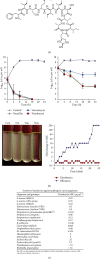

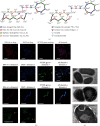
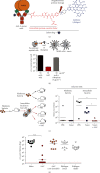
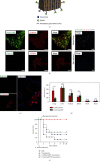
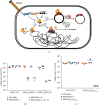
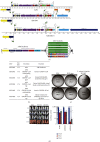

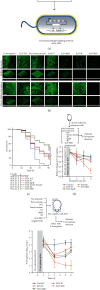
Similar articles
-
Antibiotic resistant bacteria: current situation and treatment options to accelerate the development of a new antimicrobial arsenal.Expert Rev Anti Infect Ther. 2022 Aug;20(8):1095-1108. doi: 10.1080/14787210.2022.2078308. Epub 2022 May 31. Expert Rev Anti Infect Ther. 2022. PMID: 35576494 Review.
-
Crisis averted: a world united against the menace of multiple drug-resistant superbugs -pioneering anti-AMR vaccines, RNA interference, nanomedicine, CRISPR-based antimicrobials, bacteriophage therapies, and clinical artificial intelligence strategies to safeguard global antimicrobial arsenal.Front Microbiol. 2023 Nov 30;14:1270018. doi: 10.3389/fmicb.2023.1270018. eCollection 2023. Front Microbiol. 2023. PMID: 38098671 Free PMC article. Review.
-
The CRISPR/Cas system as an antimicrobial resistance strategy in aquatic ecosystems.Funct Integr Genomics. 2024 May 28;24(3):110. doi: 10.1007/s10142-024-01362-7. Funct Integr Genomics. 2024. PMID: 38806846 Review.
-
Antimicrobial Peptides Therapy: An Emerging Alternative for Treating Drug-Resistant Bacteria.Yale J Biol Med. 2022 Dec 22;95(4):445-463. eCollection 2022 Dec. Yale J Biol Med. 2022. PMID: 36568838 Free PMC article. Review.
-
Engineered CRISPR-Cas systems for the detection and control of antibiotic-resistant infections.J Nanobiotechnology. 2021 Dec 4;19(1):401. doi: 10.1186/s12951-021-01132-8. J Nanobiotechnology. 2021. PMID: 34863214 Free PMC article. Review.
Cited by
-
Mammals' humoral immune proteins and peptides targeting the bacterial envelope: from natural protection to therapeutic applications against multidrug-resistant Gram-negatives.Biol Rev Camb Philos Soc. 2022 Jun;97(3):1005-1037. doi: 10.1111/brv.12830. Epub 2022 Jan 18. Biol Rev Camb Philos Soc. 2022. PMID: 35043558 Free PMC article. Review.
-
Prevalence, pandemic, preventions and policies to overcome antimicrobial resistance.Saudi J Biol Sci. 2024 Aug;31(8):104032. doi: 10.1016/j.sjbs.2024.104032. Epub 2024 May 26. Saudi J Biol Sci. 2024. PMID: 38854892 Free PMC article. Review.
-
Real-Time Fluorescence Microscopy on Living E. coli Sheds New Light on the Antibacterial Effects of the King Penguin β-Defensin AvBD103b.Int J Mol Sci. 2022 Feb 12;23(4):2057. doi: 10.3390/ijms23042057. Int J Mol Sci. 2022. PMID: 35216173 Free PMC article.
-
Macrocycle-Antibiotic Hybrids: A Path to Clinical Candidates.Front Chem. 2021 Apr 30;9:659845. doi: 10.3389/fchem.2021.659845. eCollection 2021. Front Chem. 2021. PMID: 33996753 Free PMC article. Review.
-
Low-Temperature Photothermal Therapy: Strategies and Applications.Research (Wash D C). 2021 May 7;2021:9816594. doi: 10.34133/2021/9816594. eCollection 2021. Research (Wash D C). 2021. PMID: 34041494 Free PMC article. Review.
References
Publication types
LinkOut - more resources
Full Text Sources

